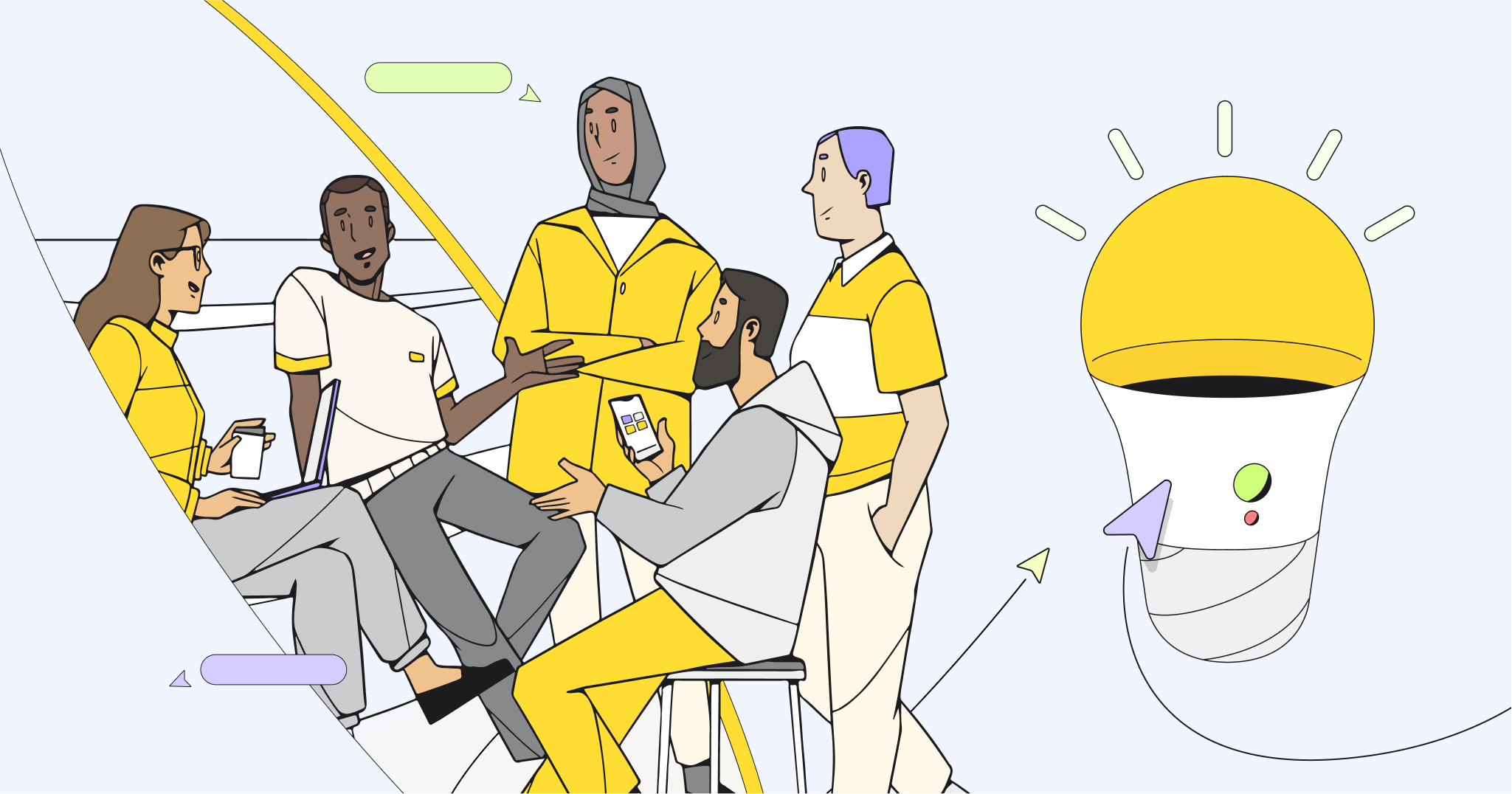What makes an innovation successful? The history of innovation is littered with great products that people simply didn’t need or want. From Segways and Crystal Pepsi to a long-forgotten Harley Davidson perfume, it’s clear that creativity and technical ability will only get you part of the way there. True success hinges on your ability to build something that meets an existing problem or gap, and products that fail to resonate will ultimately disappear.
This final installment in our series on the fundamentals of innovation velocity examines why customer-centricity — a deep, data-backed understanding of customer needs and preferences — is so crucial for innovation, yet also so challenging. Drawing on Miro’s ongoing research on the state of innovation, we will show why customer-centricity supports a quick and steady pace of innovation, highlight the top challenges identified by our research, and look at some potential solutions.
Let’s dive in.
By enabling flexibility, customer-centricity supports speed
In today’s rapidly changing world, customer-centricity bolsters speed through flexibility and is more important than ever. Yet, among global enterprises, over four in 10 information workers and decision makers agree that customer preferences now change so quickly that it’s difficult to keep up.
This poses significant challenges to developing the products or solutions best-suited for today’s customers, since the end goal is a moving target. But this is where innovation velocity comes in.
When asked why a quick and steady pace of innovation is important for their organization, 63% of global decision makers say it enables them to respond quickly to market needs and customer preferences. In fact, this is the number one reason why speed matters to these leaders. And the second reason why speed is top-of-mind? It enables organizations to stay ahead of the competition.
Here’s why customer-centricity and speed are so deeply connected: When customer insights are considered an ongoing priority, teams can keep the end user top of mind throughout the product development process. Rather than being an afterthought or getting lost in the shuffle, customer needs and preferences remain at the forefront. This means that, when disconnects emerge or new data indicates that a product might not be quite right, teams can make the necessary adjustments — and without losing too much time.
Organizations overestimate their ability to understand customers
Our first global innovation survey showed that, although 84% of enterprise leaders regard customer-centricity as crucial for innovation, nearly six in 10 consider it a nice-to-have rather than a must-have. This reveals a fundamental disconnect: While everyone knows that they need to understand their customers in order to innovate quickly and successfully, the situation isn’t so simple.
Indeed, our research has repeatedly found that leaders and information workers likely overestimate their level of attunement with customers. Although nearly everyone reports being satisfied with overall levels of customer-centricity in their organization, when we take a closer look a more nuanced story emerges — and reveals clear areas for improvement.
According to our March 2024 innovation survey, only 19% of global decision makers rate their organizations as “really strong” on gathering customer insights — and the number drops to 15% among information workers.1 Similarly, 17% of leaders and 18% of workers gave their companies top marks when it comes to turning customer insights into actionable product recommendations.
Overall, global decision makers and information workers alike cite a lack of alignment with customer insights as the top challenge to innovation at their company.2 Despite widespread agreement that organizations must foster a culture of customer-centricity, there’s no doubt that many are falling short. What’s getting in the way?
The hurdles: Leadership preferences, lack of data, and outdated tools
Information workers shed important light on how and when customer insights get lost in the shuffle. When asked about the biggest weakness around customer-centricity in their organization, the top spot is a big one: 34% of workers surveyed say that their company lacks customer insights altogether.1 What’s more, 28% percent of information workers reported that customer insights are either outdated, difficult to access, or simply not a priority at their company.
Our research also shows that leadership preferences and customer insights are sometimes opposed, and this power struggle can push the user into second place. We find that nearly ⅓ of information workers say that leadership preferences often outweigh customer data in their organization — and, interestingly, 27% of decision makers agree.
Tools are another important consideration with respect to gathering, analyzing, consolidating, and sharing customer insights across organizations, and our research finds that there is ample room for improvement.2 For example, less than half of global information workers agree that their company’s current tools centralize insights across multiple sources for easy access, and only 44% find that their tools facilitate regular feedback from customers. Meanwhile, nearly one in four information workers report that their company’s customer data is distributed across too many tools and is difficult to access. And a company can have the best data possible, but if it isn’t easy to access or use it’s likely to fall by the wayside.
Three ways to boost customer-centricity now
Although most enterprises aren’t as customer-centric as they should or could be, some small adjustments can improve things significantly. In particular, our research indicates three key areas to examine.
1. Intentionally prioritize and recognize the value of customer data
First, it’s important to gauge how team members feel about the role of customer insights in the company’s innovation efforts in general. Do individuals and teams feel that customer-centricity is a clear priority for the company’s leaders, or are customer insights considered a nice-to-have rather than a must-have? In order to build a culture of customer-centricity, everyone must be aligned on the importance of customer data at each stage of the innovation process.
2. Take stock of existing customer data
Next, consider the state of your company’s customer insights. How does your organization gather these data points and how often? Insights must be accessible internally, so it’s critical to verify whether teams know when, where, and how to locate this critical data. Unless employees have access to customer data, they can’t be expected to tap into them in their work.
3. Rethink current tools, tech, and processes
Last, take a close look at the tools and processes your organization and teams use to gather and share customer insights. Do team members know where to look or even have access to the relevant tools? Is there a clear process for building in customer insights throughout the innovation life cycle and, similarly, for making needed changes to projects in flight based on customer data? Here, an anonymous pulse survey of your organization can shed new light on how team members really feel about the role of customer-insights in their daily work.
Innovation hinges on customer-centricity
Our ongoing research on innovation reveals that customer-centricity, along with collaboration, a sense of purpose, and adaptability, are the core elements of innovation velocity. When organizations can maximize these four areas, they are able to innovate faster, better, and smarter.
Customer-centricity seems easy on the surface, but as we’ve seen, enterprises tend to overestimate their own ability levels and sometimes let it fall to the wayside. However, in today’s competitive landscape, you cannot afford to lose sight of your users.
By ensuring that customer insights are prioritized, accessible, and built into the innovation process, you can boost your innovation velocity significantly — and, ultimately, create products that the world needs now.




